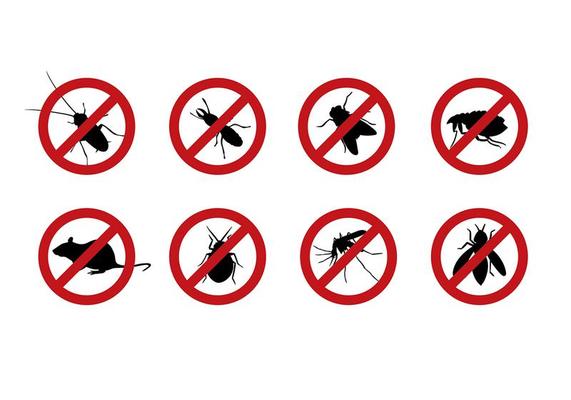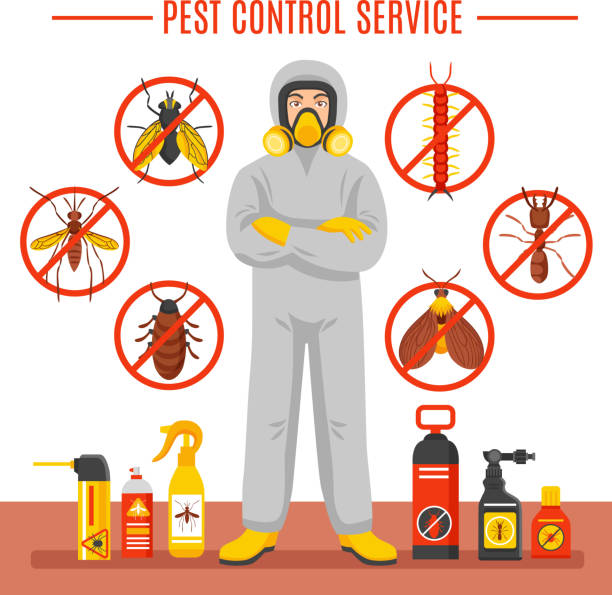Dependable Pest Control Strategies Customized by Pest Control Lockhart
Dependable Pest Control Strategies Customized by Pest Control Lockhart
Blog Article
Checking Out Invasion and Treatment Strategies on the planet of Parasite Control
The landscape of parasite control encompasses a myriad of obstacles, particularly as problems of usual household bugs proceed to progress. By incorporating precautionary procedures with innovative monitoring methods, such as Integrated Insect Management (IPM), home owners can much better protect their atmospheres.

Usual Household Vermin
When it comes to managing our home, understanding typical house insects is important. These bugs not just disrupt our comfort yet can likewise pose health and wellness dangers and damages residential property. One of the most prevalent household bugs consist of ants, cockroaches, rats, termites, and bed pests.
Ants, usually seen foraging in cooking areas, can pollute food and develop large nests. Cockroaches, recognized for their strength, can activate allergic reactions and spread microorganisms. Rodents, consisting of computer mice and rats, can cause structural damages and lug conditions like hantavirus and salmonella. Termites, frequently described as "quiet destroyers," can compromise the integrity of wooden structures, bring about expensive repair work. Bed insects, although not illness providers, can cause considerable discomfort through their attacks and lead to mental distress.
Recognizing the signs of these parasites, such as droppings, nests, or bite marks, is crucial for early intervention (Pest Control Lockhart). Proper sanitation techniques, securing access factors, and keeping a clutter-free environment are effective preventative actions. By recognizing these usual household pests and recognizing their behaviors, home owners can take positive steps to reduce infestations, ensuring a healthier living setting
Comprehending Insect Infestations
Bug problems can intensify rapidly, transforming a small nuisance right into a substantial issue otherwise resolved quickly. Understanding the nature of these invasions is important for efficient administration. Pests can attack household and commercial rooms for numerous factors, including the search for food, sanctuary, or reproducing grounds. Usual factors adding to problems include poor cleanliness, structural susceptabilities, and seasonal adjustments that drive parasites inside your home.
Recognizing the kind of insect is necessary, as different types exhibit varied actions and reproductive prices. For instance, rodents may develop nests in covert areas while pests like roaches prosper in damp environments. Early discovery frequently rests on recognizing indications such as droppings, chomp marks, or uncommon audios, which can indicate a problem prior to it becomes extreme.
Warm, moist climates can facilitate the fast growth of bug populations, while adjustments in landscaping or building and construction can inadvertently create helpful settings. An educated technique to understanding these dynamics lays the groundwork for reliable insect management approaches in the future.
Therapy Approaches and Techniques
Effective treatment approaches and strategies are important for mitigating pest infestations and recovering a secure environment. A diverse method is commonly best, integrating chemical, organic, and mechanical strategies customized to the details pest and the seriousness of the infestation.
Chemical treatments include the use of insecticides and herbicides, which can successfully eliminate parasites. Appropriate application and adherence to safety guidelines are vital to lessen threats to humans and non-target microorganisms. Integrated Pest Monitoring (IPM) urges the cautious use chemicals as a last hope, relying rather on surveillance and threshold degrees to determine intervention requirements.
Biological control methods involve introducing all-natural predators or bloodsuckers to decrease bug populaces. This strategy is progressively prominent, especially in farming setups, as it advertises environmental sustainability.
Mechanical methods, such as traps and obstacles, offer prompt remedy for insects without presenting chemicals. Choices consist of sticky traps for bugs or physical barriers for rats.
Ultimately, the selection of therapy approach should take into consideration the certain pest, the setting, and potential impacts on human health and wellness and ecosystems. A well balanced mix of these strategies can efficiently manage infestations while promoting long-lasting insect control options.
Precautionary Measures for House
Proactively attending to insect issues before they intensify is vital for maintaining a healthy home setting (Pest Control Lockhart). Executing reliable safety nets can dramatically reduce the chance of invasions, inevitably securing both your residential or commercial property and health

Proper landscape design also plays a crucial role in avoidance. Maintaining bushes and trees cut her comment is here away from the home reduces the chances of parasites finding their means inside your home. Moreover, make certain that water drainage systems are operating efficiently to avoid standing water, which can attract in insects and various other insects.
Lastly, regular assessments review are advisable. Consistently looking for signs of insect activity enables early intervention. By taking on these preventative measures, property owners can create an environment that is less hospitable to parasites, therefore enhancing their general lifestyle and minimizing the requirement for substantial parasite control interventions.
Commercial Insect Control Strategies
A thorough approach to commercial pest control is essential for organizations intending to preserve a safe and sanitary atmosphere. Reliable techniques involve a combination of regular assessments, worker training, and the application of Integrated Pest Monitoring (IPM) practices.
Regular assessments make it possible for very early discovery of bug task, enabling prompt intervention. Businesses need to create a regular schedule for these evaluations, focusing on high-risk areas such as kitchen areas, storeroom, and garbage disposal sites. Worker training is equally critical; team needs to be educated on the indications of parasite invasions and the relevance of reporting them right away.
Implementing IPM techniques assists minimize parasite concerns sustainably. This consists of habitat modification, such as sealing entry factors and minimizing clutter, as well as employing natural deterrents before he said resorting to chemical therapies.

Furthermore, working together with an accredited pest control provider makes sure access to expert expertise and advanced therapy options. This partnership can lead to customized bug control intends tailored to the particular requirements of the business, reducing dangers and improving general efficacy. Ultimately, a positive and educated strategy cultivates a pest-free environment, protecting both public health and business reputation.
Final Thought
In final thought, efficient bug control necessitates an extensive understanding of common house parasites and their behaviors, coupled with targeted treatment methods. Implementing preventive measures along with treatment strategies such as Integrated Insect Administration and organic control improves the ability to mitigate infestations.
Report this page